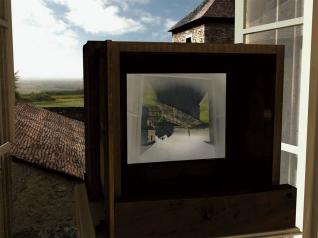The invention of photography
Joseph-Nicéphore Niépce (1765-1833) was an unlucky inventor whose merits were not appreciated until well after his death. He was associated with Louis Daguerre (1787-1851), but died before he saw the fruit of their shared work gain the recognition it deserved. In 1839, Arago presented photography to the world as solely the invention of Daguerre.
The museum displays different objects from Niépce’s laboratory, in particular the heliographs (from the Greek helios meaning sun and graphein meaning to write). These are one-off pieces made by Niépce himself, and are considered to be the first photographs (the term photography only appeared in 1839 in a speech given by François Arago at the Académie des sciences). To record a heliographic image, Niépce covered a metal plate with Bitumen of Judea dissolved in lavender essence. The plate then became photo sensitive. Once it had dried, it was placed in a camera obscura , and exposed to the light for many hours. The image captured was latent; to make it appear, the plate had to be immersed in a bath that dissolved the parts of the bitumen that were less exposed (the bitumen that was exposed to strong light hardened and didn’t dissolve).
The oldest heliography recorded dates from 1826 and is today part of the collections of the University of Texas in Austin. It is entitled Le Point de vue du Gras , and represents a landscape not far from Chalon sur Saône. The image is fixed on a tin plate with a mirrored aspect that makes it hard to see. This one-off piece is reproduced at the musée Niépce thanks to digital technology using a flat screen that the visitor can handle themselves. Current technology helps us to better understand Niépce’s initial process through film.


